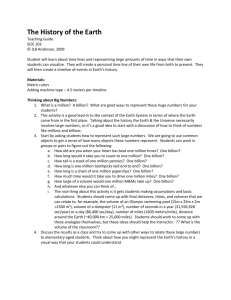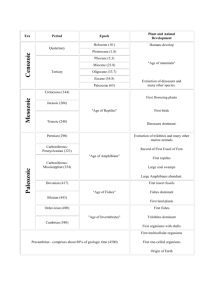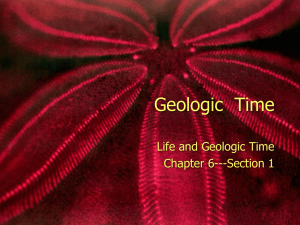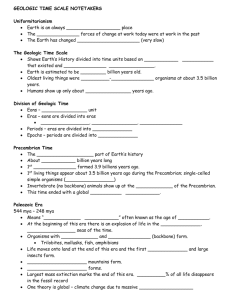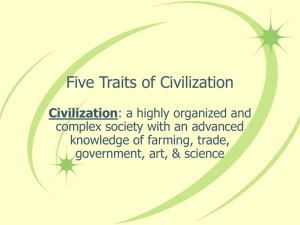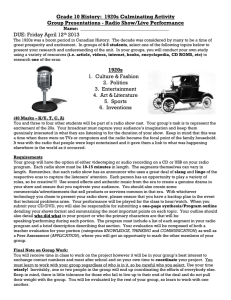Interpreting the Geologic Time Scale
advertisement
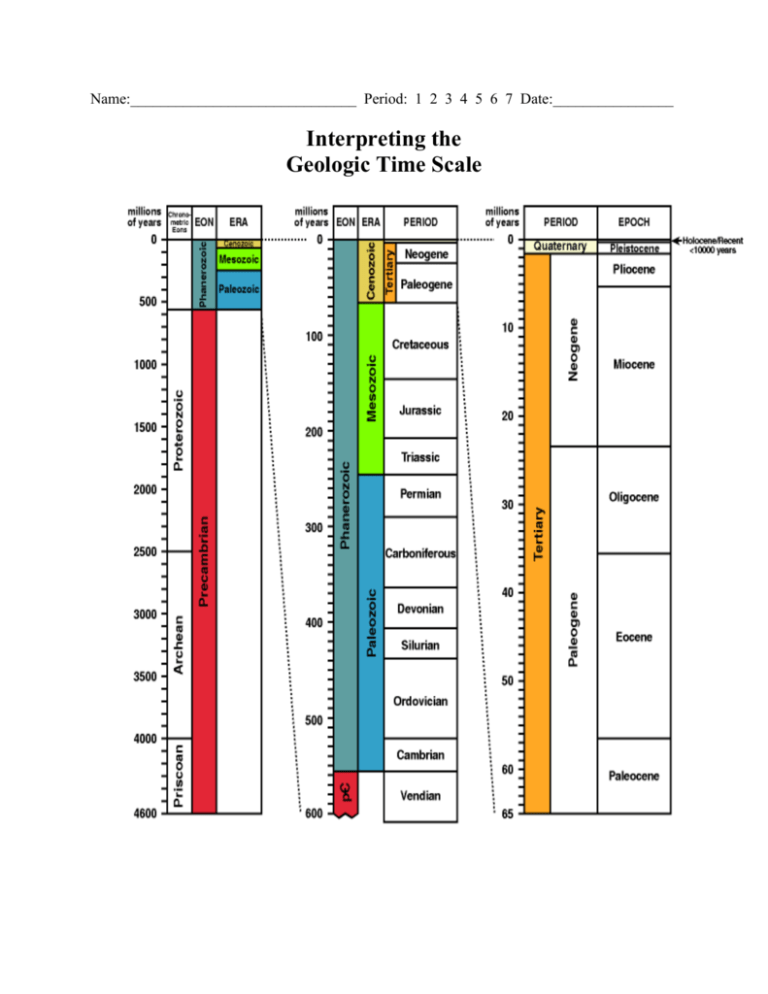
Name:______________________________ Period: 1 2 3 4 5 6 7 Date:________________ Interpreting the Geologic Time Scale Information about the major Geological Eras/Periods Precambrian: -Fossils are extremely rare, primitive aquatic plants, and archaebacteria colonies (stromatolites). Paleozoic: Cambrian: Earliest abundant record of marine life. Trilobites were dominant. Ordovician: Earliest fishes, invertebrates dominant, jellyfish, mollusks (shelled creatures), echinoderms (starfish, sea urchins, sand dollars, etc.) Silurian: Earliest terrestrial plants and animals (on land), sea scorpions (eurypterids). Devonian: Earliest amphibians, ammonites (shelled nautilus type creatures) Carboniferous: Earliest reptiles, coal forming forests, abundant sharks, amphibians, large/numerous scale trees. Permian: Extinction of many kinds of marine animals including trilobites. Minimal changes in terrestrial animals. Mesozoic: Triassic: Earliest dinosaurs, abundant cycads’ (tropical leafy evergreen plants), and conifers (pine tree like plants) Jurassic: Earliest birds and mammals, abundant dinosaurs and ammonites. Cretaceous: Earliest flowering plants, T. Rex exists, climax of dinosaurs and ammonites followed by their extinction, great decline of brachiopods (clam like organisms) Cenozoic: Tertiary: Earliest placental mammals, many modern types of mammals, large running mammals, abundant grazing mammals. Quaternary: Humans, mastodons, mammoths, large carnivores. Questions: 1. List the geological eras in order from most recent to furthest in the past. 2. Which era lasted the longest? How long did it last? 3. Which era covered the shortest length of time? 4. Why were there very few fossil records from the Precambrian era? 5. Why was there a giant explosion (Cambrian explosion) of diversity in the Paleozoic era? 6. During which era did dinosaurs exist? 7. What eras and periods have mammals existed during?

